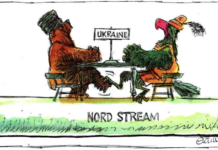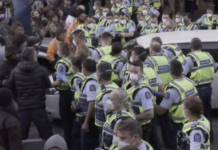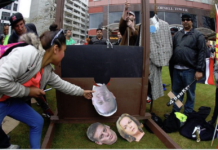
A survey of senior doctors at Nelson Marlborough District Health Board has revealed a shortage of specialists nearly two and a half times larger than the number of vacancies officially recorded, says Ian Powell, Executive Director of the Association of Salaried Medical Specialists (ASMS).
This follows a similar survey of senior doctors at Capital & Coast DHB, released last week, which also recorded significant shortages (https://www.asms.org.nz/news/asms-news/2017/09/11/survey-reveals-significant-shortfall-senior-doctors-capital-coast-dhb/).
“We’re seeing an ongoing pattern of significant but largely invisible shortages in the senior medical workforce, which is very concerning,” says Mr Powell. “There’s a very clear gap between the specialist vacancies that are actually advertised and the ongoing shortfalls in senior doctor numbers that are having an impact, and it’s this gap that needs to be addressed as a matter of priority.”
The survey of clinical leaders at Nelson Marlborough DHB was carried out by the ASMS with a view to assessing how many SMO full-time equivalents are needed to provide a safe and quality service for patients, including patients in need of treatment but unable to access it.
Data produced by the Organisation of Economic Cooperation and Development (OECD) show New Zealand has one of the lowest number of specialists per head of population out of 32 countries.
Main findings from the Nelson Marlborough DHB survey:
- Of the 21 HoDs contacted for participation in the survey, 14 responded (67%), representing approximately 61% (71.8 FTEs) of the SMO FTE workforce at NMDHB.
- 8 HoDs (57%) assessed they had inadequate FTE SMOs for their services.
- Overall, they estimated they needed 12.4 more FTEs – or 17% of the current SMO staffing allocation – to provide safe, quality and timely health care at the time of the survey.
- Despite the estimated 12.4 FTE staffing shortfall, there were only 5.1 FTE vacancies at the time of the survey (meaning the estimated staffing shortfall was 2.4 times higher than vacancies at the time).
- From the 14 HoD responses, 14% indicated their SMO staff are ‘never’ or ‘rarely’ able to access the recommended level of non-clinical time, and 29% felt their staff had insufficient time to undertake training and education duties.
- On average, 20% felt there was inadequate internal SMO backup cover for short-term sick leave, annual leave, continuing medical education leave or for covering training and mentoring duties while staff were away.
- 21% responded that there was inadequate access to locums or additional staff to cover for long-term leave.
“Hospitals are doing their best with the money and staff they have, and we’re fortunate in New Zealand to have a dedicated, expert health workforce,” says Mr Powell. “However, the evidence is very clear that we don’t have enough senior doctors to provide the levels of quality care required by our communities.
“Whichever political party leads the next Government after this weekend’s election, they need to step up to the challenge of resourcing New Zealand’s public hospitals adequately so that these shortages don’t worsen.”
The full survey results are detailed in an ASMS Research Brief available online at https://www.asms.org.nz/wp-content/uploads/2017/09/NMDHB-staffing-survey_168405.2.pdf. The NMDHB staffing survey is the fourth in the series to date. Similar surveys have been carried out in Capital & Coast, Hawke’s Bay and MidCentral DHBs, and reports of these are also available on the ASMS website at https://www.asms.org.nz/publications/researchbrief/.





This region has been voting for nik smith for how many years ? and what has he been doing shit all no wonder they are in the shit they need to vote Greens to clean up niks shit
Comments are closed.